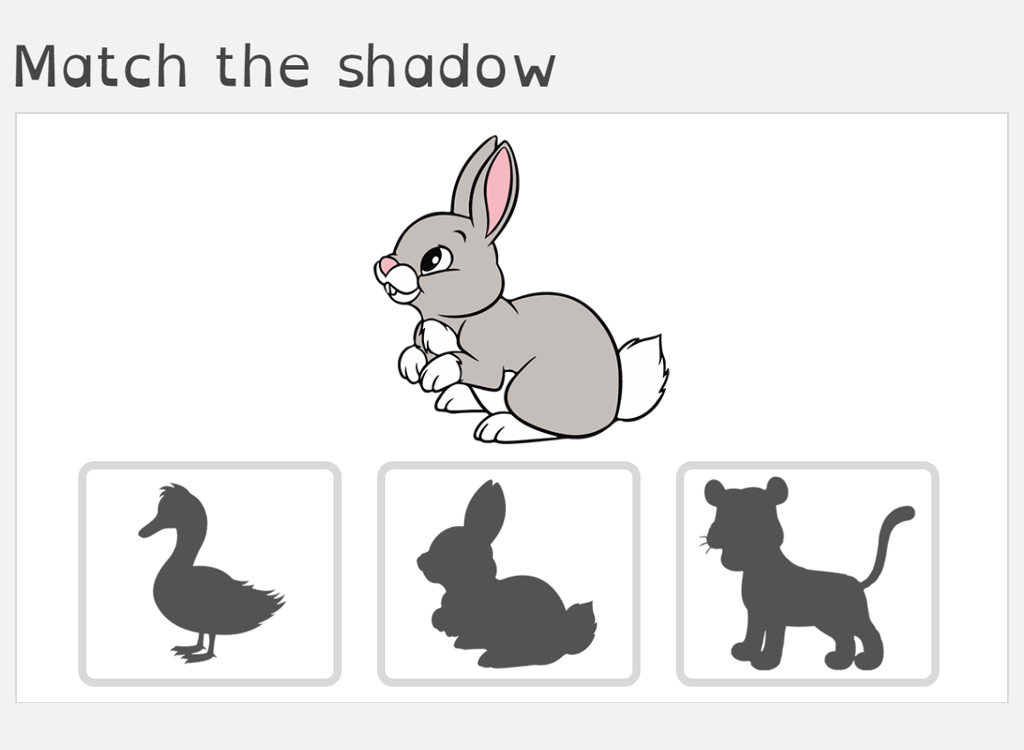Shadow Match
Shadow match is an activity for visual discrimination. This activity tests the ability of your child to see patterns and shapes.
What is visual discrimination?
Visual discrimination helps us to see the differences and similarities in shapes, colour, size, etc. Children with visual discrimination problems may not able to really see the small things in a picture. Children with perfect vision may still have problems in detecting similarities and differences and positioning of the objects. They may also have difficulty in understanding how the different parts of pictures are connected. They may have problems with correctly understanding the shapes of objects- circle, oval, square etc. They may confuse h with b or b with d etc.
Poor visual discrimination is a problem of understanding and interpreting by the brain of what is seen through the eyes. This leads to poor visual memory or faulty storing of images.
Why visual discrimination is important?
Visual discrimination is a skill needed for many activities we do every day. We read because we can see how different each letter is. Therefore, children with poor visual discrimination are poor readers. They may also have problems with writing. This is one of the reasons why some children reverse letters while writing. Writing defects such as omission or addition of letters in a word, poor spelling, poor use of margins may be the result of poor visual discrimination. Poor handwriting (dysgraphia) can be improved by better visual discrimination. Children with faulty visual discrimination may find geometry a difficult subject to learn because they may not able to understand or draw the geometrical shapes properly. They also may have difficulty in copying from a board. In short, visual discrimination is a very important life skill.
In this activity, a picture is shown and below it, three shadows are shown. One of the shadows is that of the picture. Identifying the shadow of the picture is the challenge.
Tips for you, the Parents:
This activity is a test of visual discrimination.
You can assess your child’s visual discrimination skill. If your child is not good at visual discrimination, the following activities can be done at home.
1. Sorting the kings, queens, and jacks in a pack of cards.
A pack of cards have four each of king, queen and jack. Cut the distinguishing marks k, q and j from the cards. Shuffle the twelve cards and ask the child to sort the cards into kings, queens and jacks.
2. Sorting beads according to colour:
Ask the child to sort the beads according to colour and sizes.
3. Children’s magazines have ‘spot the difference’ activities.
Your child can do these.
4. Identifying different fonts.
Type on a page words or letters of different fonts and ask the child to identify letters or words with the same fonts. One example is given below.

Your child can do this activity with letters and words in different colours and fonts.
5. Related activities in this website.
Find the identical object, Jigsaw puzzle, Count the number of similar objects, Longest and shortest, Matching game, and Word boxes are activities which can help your child.
To know more, go to Resources under this activity. It contains information that you can use.
- Does your child have difficulty in matching the shadows? One remedial action is to make your child copy pictures by tracing. Use a tracing paper.
- You can also buy memory games from toy shops. Many card games are available for developing memory. These games can also be used to improve visual discrimination.
- Connecting the dots to make a picture is also a good activity. Children’s magazines and children’s activity books have useful exercises.
- You can also search the internet for free online memory games based on pictures and images.
- Search the internet for visual discrimination exercises and exercises for vision therapy.
- Another excellent resource is Physical Activities for Improving Children’s Learning and Behaviour -- A Guide to Sensory Motor Development by Billye Ann Cheatum and Allison A. Hammond. Chapter 10 of this book deals with the visual system.

